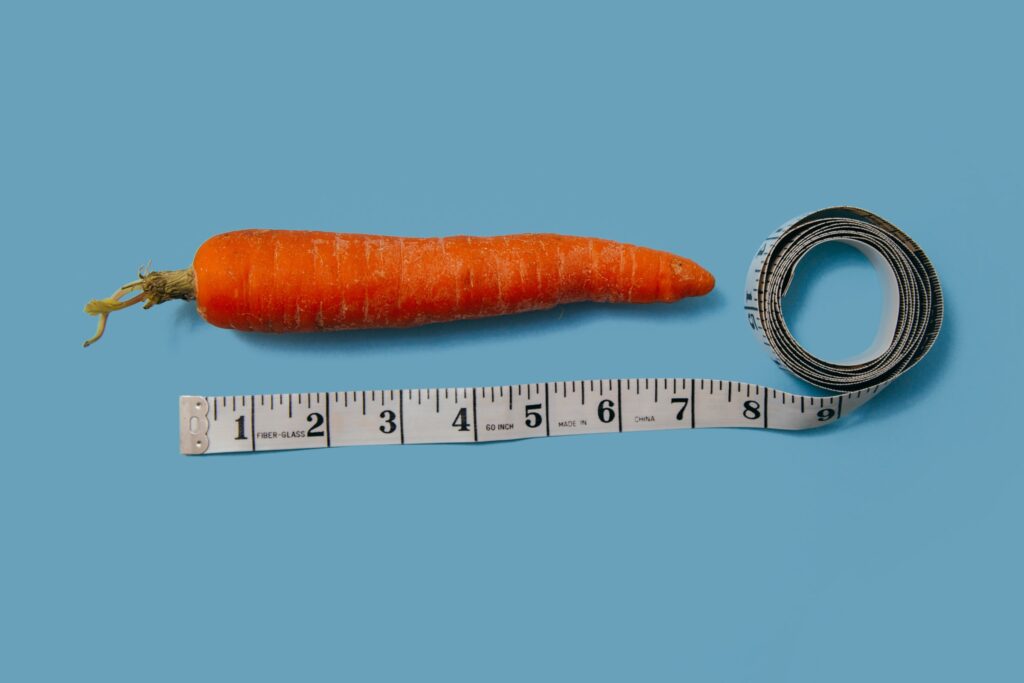Early 2021 saw the release of a new penis size study out of Italy with some surprising results. The work of the researchers found an average result that was more than an inch larger (nearly 3cm) than the average penis size seen in numerous other studies. So do Italian men really have larger penises? Probably not, because there's one fatal flaw that renders the whole study meaningless: the researchers didn't measure the penises themselves.

The Di Mauro 2021 study enrolled 4,685 men across Italy that had visited urology clinics in 2019. That's one of the largest numbers involved in penis size studies, and could've been a useful measure. Except that instead of a doctor measuring the penis, they asked the study participants to measure it themselves:
Each patient was given detailed and illustrated directions on how to measure their penis (erect length and circumference) in flaccidity and in erection, from the lower base to the distal penile tip. Most men measured their penis while alone, using hand stimulation to become erect.
So yeah, the researchers told the patients how to measure, then sent them off to a room to measure themselves in private and then report back the results. While the instructions on how to measure a penis were correct (stand up, ruler on top), it's a simple reality of modern society that you cannot trust men to accurately tell their penis size, even for a scientific study.
Which is how we end up with a flawed study average of 6.6 inches erect length and a 4.75-inch erect girth. That's more than an inch over the average length of other studies, including those done in Europe. The average girth isn't appreciably higher than usual, with the participants undervaluing girth because pop culture values length.
Additionally, while it was a large number of men, the pool from which they were selected poses additional problems that surface in the study's numbers. By enrolling men in the study who were involved in andrological consultation, the researchers likely incorporated a larger number of underdeveloped and younger males — as the study notes, they only included excluded subjects younger than 15 years old which is right in the middle of the typical puberty-driven penis growth period. The average age in the study was just 19, the relative youth of the study really informs the cultural exaggeration of penis size almost entirely by itself.
As the study's introduction noted, other surveys have found that "only 55% of men were satisfied with the size of one's penis", which lends further credence to the suspicion that the men in this study exaggerated their size.
The study's flawed numbers say 1-in-2500 penises should be at least 10 inches long — utter nonsense.
This all further explains the very large standard deviation of 1.0 inches (2.55 cm), where other studies typically land closer to 2/3 an inch (1.74 cm). All of this dramatically skews the results, with a wider and distribution curve centered over a higher median number than almost any other researcher-measured penis size study.
Using data from other studies, 6 inches erect length would be a top 25% size, while using the Di Mauro study's results it would be the bottom 25%. Seven inches goes from a relatively rare top 1.4% erect penis length to ho-hum 65th percentile — basically average. Even an absurd 10 inches length, which is possible but extremely unlikely under all other studies becomes a 1-in-2,500 dick.
Is it possible that extremely large penises are more common than the statistics suggest? Sure. But researcher-measured results rarely find any penises longer than 8.5 inches, let alone one or two longer than 10 inches in a sub-5,000 subject pool.
This just further points to the troubles with penis size studies that rely on self-reported data. Even given explicit instructions on how to measure their penis the correct way so the numbers can be reliably compared with other results, when left to their own devices men cannot help but exaggerate their size. The Di Mauro 2021 penis size study's fatal flaw is that it didn't collect measurements of penis size — it actually collected data of what size men claim to have.











